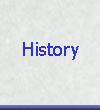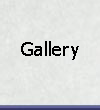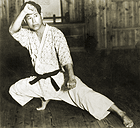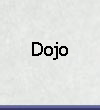|
|
|||||
Hombu dojo of
|

|

|

|

|
|
|
Global Expansion of Okinawan Karate Modern karate was introduced to Japan in 1923 by Gichin Funokoshi. Karate then made its way to Korea in the later part of the 1940's where the pinan kata (composed by Anko Itosu) were assimilated as well as various advanced kata. The transition of karate to modern times was greatly facilitated by Shoshin Nagamine who in 1947 formalized the techniques and philosophies of masters from around Tomari and Shuri. The style, which he named Matsubayashi Shorin Ryu, synthesized the teachings of Ankichi Arakaki (Ansei Ueshiro’s uncle), Chotoku Kyan, Choki Motobu, and a long line of their predecessors, all renowned karate men of their day. |
|||||
|
In the 1950's karate came to America by way of the returning US marines who paved the way for Grand Master Ansei Ueshiro’s arrival in 1962. Europe and Russia both embraced karate in the 1960's and many representatives of Okinawan karate may be found in South and Central America. Global expansion of karate has come at a price. Popularity and the drive for commercial success have led many schools to neglect the traditional emphasis on kata and personal development in favor of tournaments and free-style fighting. This trend will only be countered if students explore the humble origins and rich history of karate-do. Although such inquiries often lead to more questions and debate, they invariably produce a formidable weapon: perspective.
|
|||||
|
Sources: |
|||||
|
The Shorin-Ryu Okinawan Karate Question and Answer Book, by Robert Scaglione and William Cummins. New York, Person-to-Person Publishing, 1984. Karate of Okinawa: Building Warrior Spirit with Gan, Soku, Tanden, Riki, by Robert Scaglione and William Cummins. New York, Person-to-Person Publishing, 1989. A Short History of Okinawan Karate-Do, www.shorinryu.com
|
|||||
|
|
|||||
|
|
|
||||
//////////






